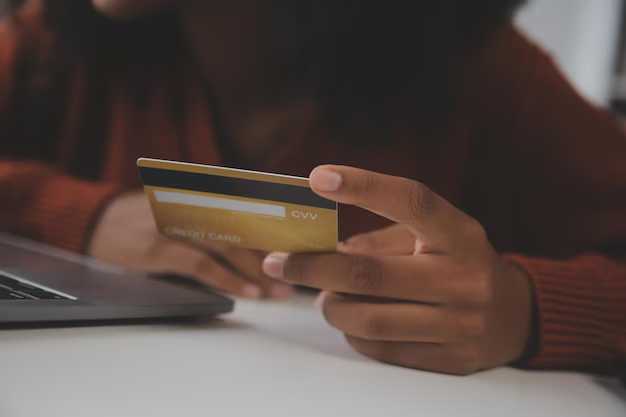Strategies to Eliminate Credit Card Debt: A Comprehensive Guide
Tackling credit card debt can often feel like an overwhelming endeavor. It can be daunting to see balances adding up, interest rates compounding, and payments piling on. But with a thoughtful approach, there are effective strategies to free yourself from the financial burden. Let’s explore how you can manage and eventually eliminate credit card debt by considering various practical tactics.
Understanding Your Credit Card Debt
Assess Your Debt Situation
Before you can tackle your credit card debt, it’s essential to get a clear picture of your financial situation. Start by listing all your credit card balances, along with the interest rates and minimum payments for each. This assessment will help you prioritize which debts to tackle first and ensure you're addressing the most financially burdensome accounts.
The Impact of Compound Interest
Interest rates play a crucial role in how quickly your debt can grow. Understanding how compound interest works on your credit cards can emphasize the importance of paying more than the minimum balance. Over time, compound interest can exponentially increase the total amount owed, making it vital to focus on high-interest debt.
Effective Strategies to Reduce Credit Card Debt
Create a Practical Budget
Building a budget is an actionable first step in managing your finances. A budget can reveal unnecessary spending and redirect funds towards debt repayment. Start by tracking your monthly income and expenses. Identify areas where you can cut costs and allocate those savings to paying down your debt.
Prioritize Debt Using the Avalanche or Snowball Method
- Avalanche Method: This strategy involves focusing on paying off debts with the highest interest rates first, while making minimum payments on other accounts. This method minimizes the total interest paid over time.
- Snowball Method: This approach prioritizes paying off the smallest debts first, providing quick wins and psychological encouragement as you eliminate debt step-by-step.
Both methods have their merits; choose one that suits your financial and emotional needs best.
Negotiate Lower Interest Rates
Believe it or not, a simple phone call might lead to reduced interest rates. Many credit card companies are open to negotiation, particularly if you have a history of timely payments. Contact your credit card issuer, express your difficulties, and request a lower interest rate to make payments more manageable.
Exploring Balance Transfers and Consolidation
Balance Transfers
Balance transfers can be an effective way to manage high-interest debt. A balance transfer involves moving your debt from a high-interest credit card to one with a lower interest rate—sometimes even 0% for an introductory period. Evaluate balance transfer options carefully, considering associated fees and the length of the introductory rate to ensure it provides clear benefits.
Debt Consolidation Loans
For those with multiple debts, consolidation loans can streamline your payments. By consolidating your debts into a single loan with a fixed interest rate, you can simplify payments and potentially secure a lower interest rate. Be sure to explore options cautiously and verify that consolidation will lower your overall costs.
Building a Savings Cushion
Establish an Emergency Fund
While aggressively paying off debt, it’s crucial to also have savings. An emergency fund can prevent you from relying on credit cards in times of unexpected expenses. Aim to build a small emergency fund alongside debt repayment to provide financial security.
Let’s Summarize: Key Takeaways 📌
- 🔍 Assess the Situation: Know your total debt, interest rates, and minimum payments.
- 📈 Understand Interest: Be aware of how compound interest impacts your overall balance.
- 📊 Budget Wisely: Create a budget to identify savings that can go toward debt reduction.
- 🎯 Choose a Method: Decide between the Avalanche or Snowball method for payoff.
- 📞 Negotiate Your Rates: Reach out to credit companies for lower interest rates.
- 🔄 Consider Transfers: Use balance transfers to capitalize on lower interest periods.
- 🏦 Explore Consolidation: Look into consolidation loans for simplifying payments.
- 💰 Emergency Fund: Secure a financial buffer to stay debt-free in emergencies.
Maintaining a Debt-Free Lifestyle
Adjust Financial Habits
Once your credit card debt is under control, maintaining a debt-free lifestyle requires dedication. Focus on spending less than you earn, continuing with budgeting, and avoiding impulse purchases. Additionally, consider using credit cards strategically by paying off balances in full each month to avoid interest charges and improve your credit score.
Regular Financial Reviews
An ongoing review of your financial health is beneficial. Schedule regular check-ins on your budget, spending habits, and savings goals. This process helps ensure you stay on track and make any necessary adjustments to your financial plans.
Conclusion: Embracing Financial Freedom
Eliminating credit card debt doesn't happen overnight, but with commitment and the right strategies, you can gradually free yourself from financial constraints. By understanding your debt, prioritizing payments effectively, considering balance transfers or consolidation, and implementing a robust budget, you can take control of your financial future. Remember, your journey is unique, and the most important step is to start. Financial peace of mind awaits, and with perseverance, it is entirely achievable.

Related Topics
- a Credit Card
- Am Eagle Credit Card
- Are Airline Credit Cards Worth It
- Are Credit Card Points Taxable
- Are Credit Card Rewards Taxable
- Can a Credit Card Company Sue You
- Can a Debit Card Be Used As a Credit Card
- Can a Money Order Be Paid With a Credit Card
- Can a Secured Credit Card Build Credit
- Can Credit Card Companies Garnish Your Wages